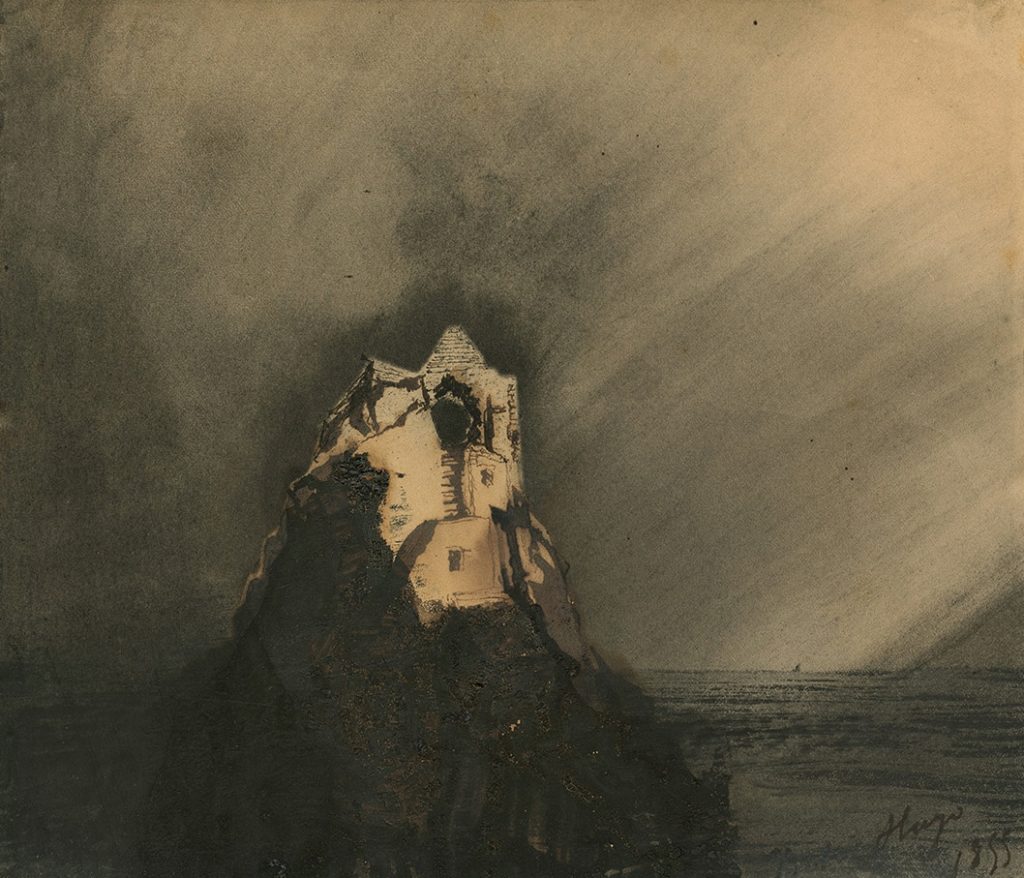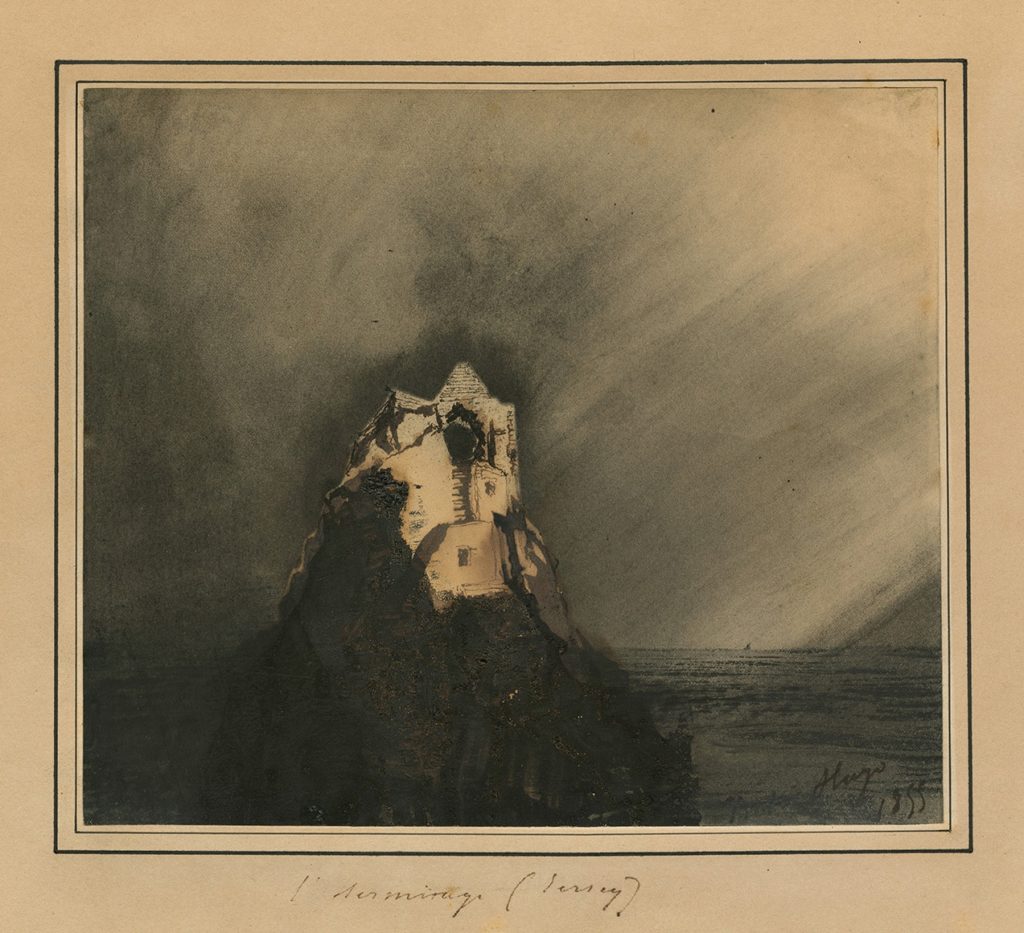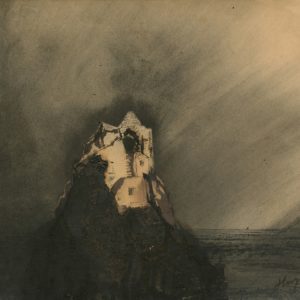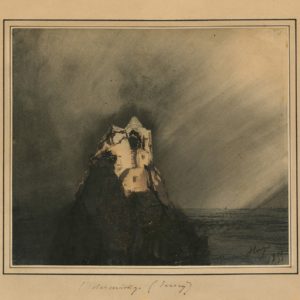L’Ermitage, à Jersey
The Hermitage, in Jersey
Pen, brown ink on laid paper, 1855
Tilted L’Hermitage (Jersey), signed and dated on the lower right Victor Hugo 1855
Dedicated lower right a mon vaillant compagnion de lutte et d’exil, à mon collègue, à mon frère d’épreuve, à celui qui a guéri ma fille, à mon ami le docteur terrier / Victor Hugo / Guernesay 1er janvier 1847
Size
19 x 22 cm
Provenance
Private collection, Paris
Literature
Pierre Georgel, Dessins de Victor Hugo, Paris, 1971, no. 66, pp. 124-125; Pierre Georgel, Cet immense rêve de l’océan: paysages de mer et autres sujets marins par Victor Hugo, Paris, 2005, p. 72, no. 59
Exhibition
The present sheet is among the best and the most stunning sheets by Victor Hugo still in private hands. The creator of Notre-Dame de Paris and Les Misérables, was not only one of the most important French writers and poets of the 19th century, but also a gifted draughtsman who left almost 4000 drawings. Most of them however were kept by him and then donated after his death to the Bibliothèque Nationale de France and to the Maison Victor Hugo, both in Paris. During his life, he never sold itthem but gave some to friends, artists, mistresses, etc, like the current one very nicely dedicated to Doctor Barthélemy Terrier (1805-1876), who was exiled at the same time as Hugo, and was very close to the family in Jersey and Guernsey.
The present Hermitage was made during his stay on Jersey after his exile from France in 1850, and it depicts the hermitage on an islet off the coast. A little sketch, in a private collection, and two other small drawings in the collection of the Maison Victor Hugo are known representing the same scene. (See Georgel, 2005, pp. 72-73). In Hugo’s time, the Hermitage was still separated from the rest of Jersey by the sea. According to local lore, it had been the dwelling of the 6th century hermit Saint Helier or Helibertus, who healed the locals and met his end at the hands of pirates. The story would have certainly appealed to Hugo, as would the romantic view of the ruined building on top of a hill. The theme of the old, haunting building on a hill top recurs throughout Hugo’s drawings.
Here, the Rembranesque treatment of the sky is striking. As in the famous Rembrandt print, the Three Trees, a stormy and dark sky full of rain is blown away to the left by strong winds from the right. The relation is obvious and very attractive. The Hermitage is shown by moonlight, with the staircase leading up to the hermit’s cave. While at Jersey, the Hugo family took a keen interest in photography, setting up their own studio and using the new medium to capture the landscape and the artist in exile. Hugo used these photographs as inspiration for his drawings, and probably did so for this work. Hugo’s drawing feels very modern. This is the effect of his unique modus operandi; using the pen he also wrote with and mixing different techniques to draw.
A few years after the present sheet, writing to the poet Charles Baudelaire in 1860, Hugo himself states about his drawings: “I have ended up mixing in crayon, charcoal, sepia, coal, soot, and all sorts of bizarre mixtures that manage to render approximately what I see with my eyes and most of all in my mind. This amuses me between two verses” (quoted in Pierre Georgel, Drawings by Victor Hugo. Catalogue, London, 1974, p. 8).










